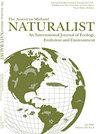Exploring the Origins of Red Foxes (Vulpes vulpes) on Isle Royale
IF 0.6
4区 环境科学与生态学
Q4 Agricultural and Biological Sciences
引用次数: 1
Abstract
Abstract. Isle Royale National Park is generally considered a pristine ecosystem, but the island archipelago has a long history of human impacts that have altered the island's mammal communities through extirpations and introductions. The origin of red foxes (Vulpes vulpes) on the islands are of particular interest given their ubiquity and uncertain colonization history. Red foxes were first reported on Isle Royale in 1925, shortly after the foundation of a small fox farm that began on Isle Royale in 1922. We sequenced two mitochondrial haplotypes from red fox scats collected on Isle Royale and compared them to haplotypes from the mainland surrounding Lake Superior, the predominant source of the island's other native mammals. Some Isle Royale foxes matched widespread haplotypes commonly found across Canada, but over half of our samples matched haplotypes previously detected only in Newfoundland. While we cannot conclude a singular origin, we offer a working hypothesis red foxes on Isle Royale are derived from a combination of natural colonization and human introduction. Specifically, we propose native red foxes may be admixed with fur-farmed foxes from an introduction in the early 20th century.探索皇家岛上红狐狸(Vulpes Vulpes)的起源
摘要皇家岛国家公园通常被认为是一个原始的生态系统,但岛屿群岛有着悠久的人类影响历史,通过灭绝和引入改变了岛上的哺乳动物群落。红狐(Vulpes Vulpes)在岛上的起源是特别有趣的,因为它们无处不在和不确定的殖民历史。1925年,在皇家岛上建立了一个小型狐狸养殖场后不久,第一次报道了红狐。我们从皇家岛上收集的红狐粪便中对两种线粒体单倍型进行了测序,并将其与苏必利尔湖周围大陆的单倍型进行了比较,苏必利尔湖是岛上其他本地哺乳动物的主要来源。一些皇家岛狐狸符合加拿大普遍存在的单倍型,但超过一半的样本符合以前只在纽芬兰发现的单倍型。虽然我们不能得出单一起源的结论,但我们提出了一个可行的假设,即皇家岛上的红狐是由自然殖民和人类引入的结合而来的。具体来说,我们提出本土红狐可能与20世纪初引入的毛皮养殖狐狸混合。
本文章由计算机程序翻译,如有差异,请以英文原文为准。
求助全文
约1分钟内获得全文
求助全文
来源期刊

American Midland Naturalist
环境科学-生态学
CiteScore
1.20
自引率
0.00%
发文量
38
审稿时长
18-36 weeks
期刊介绍:
The American Midland Naturalist has been published for 90 years by the University of Notre Dame. The connotations of Midland and Naturalist have broadened and its geographic coverage now includes North America with occasional articles from other continents. The old image of naturalist has changed and the journal publishes what Charles Elton aptly termed "scientific natural history" including field and experimental biology. Its significance and breadth of coverage are evident in that the American Midland Naturalist is among the most frequently cited journals in publications on ecology, mammalogy, herpetology, ornithology, ichthyology, parasitology, aquatic and invertebrate biology and other biological disciplines.
 求助内容:
求助内容: 应助结果提醒方式:
应助结果提醒方式:


